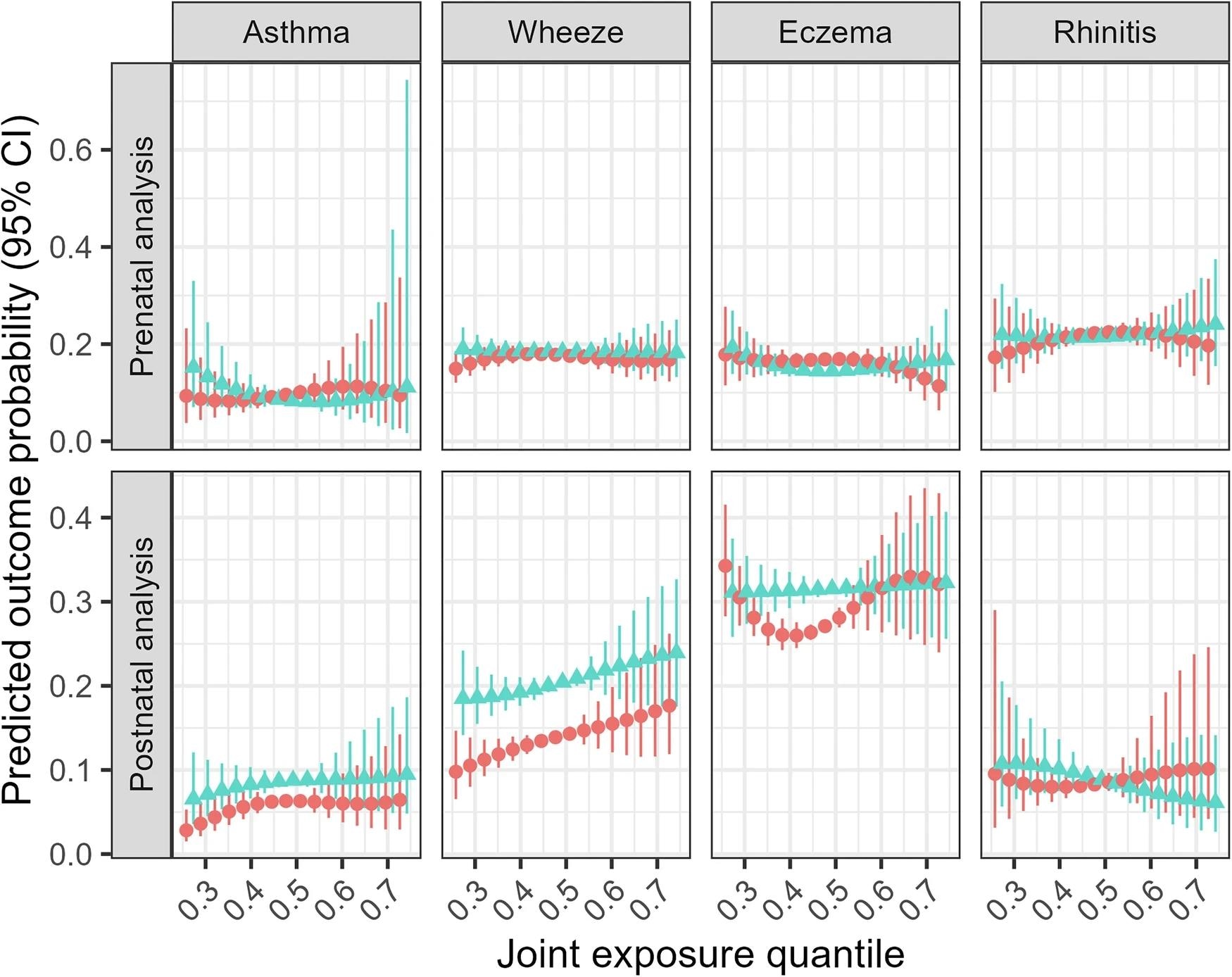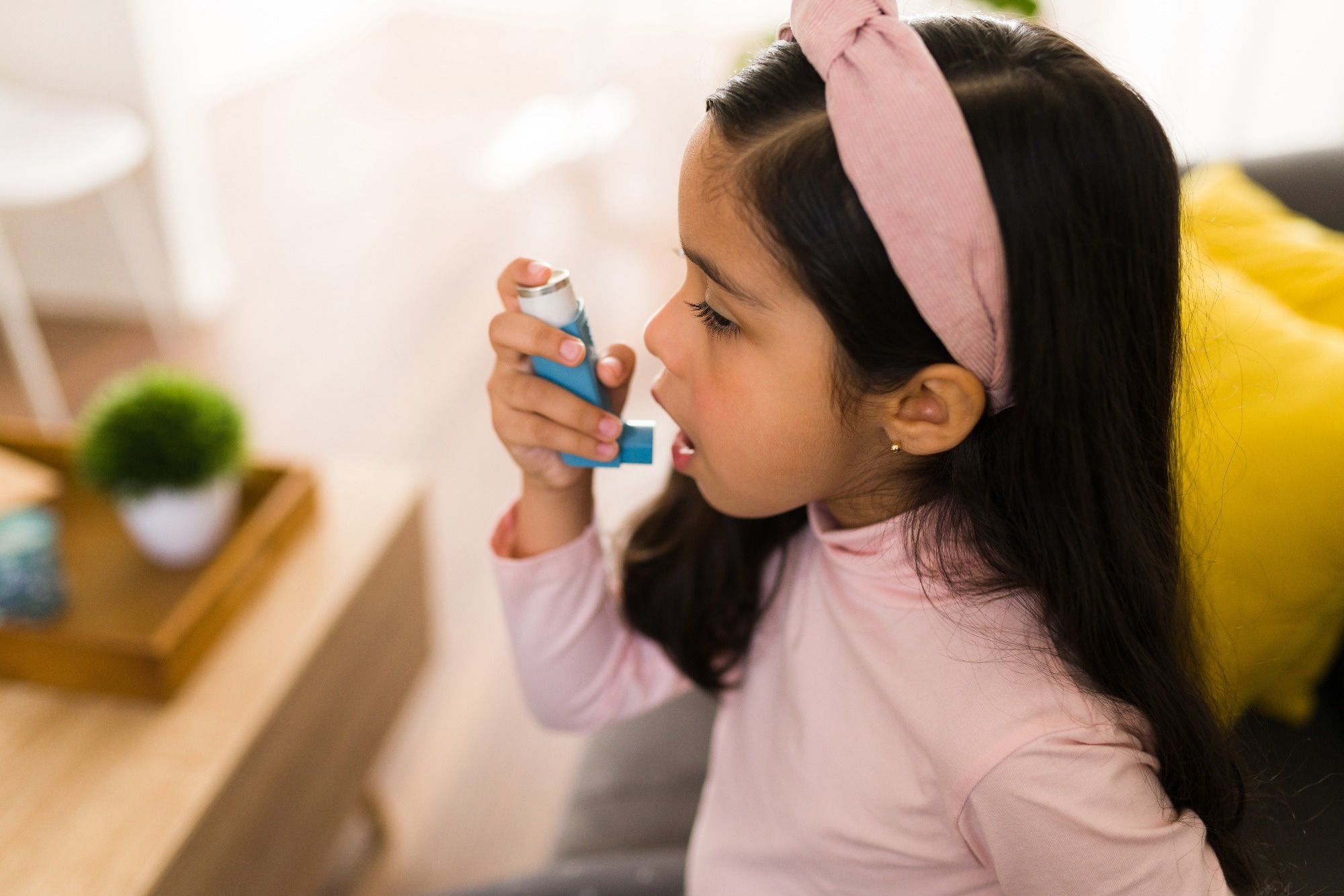Scientists reveal that children exposed to certain plastic-derived chemicals before age five face higher risks of asthma and wheeze, underscoring growing concerns over everyday environmental exposures.
Study: Phthalates and bisphenols early-life exposure, and childhood allergic conditions: a pooled analysis of cohort studies. Image Credit: antoniodiaz / Shutterstock
In a recent study published in the Journal of Exposure Science & Environmental Epidemiology, researchers utilized an extensive (n = 5,306) pooled Australian, United States (US), and Canadian cohort to investigate the clinical outcomes of childhood and early life (before the age of 5) exposure to harmful plastic-derived chemicals.
Their findings reveal that increased prenatal and early-life exposure to phthalates and bisphenols, chemicals found in many everyday products such as shampoos and food packaging, was associated with a modestly increased risk of developing asthma and other allergic conditions by preschool age. The findings contribute to a growing body of evidence on how we address invisible pollutants that surround us and our children from birth.
Background
Phthalates and bisphenols, ubiquitous chemicals found in plastics, packaging, toys, grooming, and personal-care products, are increasingly scrutinized for their potentially harmful effects on child health. A growing body of evidence suggests that these persistent environmental contaminants act as endocrine-disrupting chemicals (EDCs), altering metabolic and neurodevelopmental pathways and having potentially lifelong consequences.
The impacts of phthalates and bisphenols on respiratory outcomes and allergies remain less understood. While a limited number of epidemiological investigations have linked these EDCs with an increased risk of adverse childhood respiratory outcomes (wheezing, eczema, asthma, and rhinitis), recent systematic reviews and meta-analyses have flagged these findings as inconsistent and often confounding, potentially due to a glaring lack of methodological standardization between studies.
Furthermore, even in this understudied field, investigations on the impacts of EDCs on children under the age of five, a period of rapid development and exacerbated chemical sensitivity, are underrepresented. Consequently, clinicians and policymakers have little to no scientific evidence upon which to base their public health and environmental recommendations.
About the study
The present study aims to address this knowledge gap and inform future environmental and public health policy. By pooling major birth cohorts across three countries, it evaluates how urinary levels of phthalates and bisphenols (measured during pregnancy and early childhood) correlate with diagnosed allergic outcomes by age five. The study further aims to elucidate if any identified EDC-allergy risk associations are influenced by exposure timing, dose, or sex.
Study data were obtained and pooled from four established longitudinal cohorts: 1. Australia’s Barwon Infant Study (BIS), 2. Canada’s Canadian Healthy Infant Longitudinal Development Study (CHILD) study, and the United States’ (US’s) 3. Health Outcomes and Measures of the Environment (HOME) Study and 4. Environmental Influences on Child Health Outcomes (ECHO).
Individuals with preserved urinary samples or urinary phthalates and bisphenols data from their first five years of life (postnatal subcohort) or pregnancy time (prenatal), alongside at least one allergy test from the same period, were included as current study participants. EDCs were characterized and quantified using standardized high-performance liquid chromatography-tandem mass spectrometry (HPLC-MS).
Study outcomes (wheezing, asthma, rhinitis, and eczema) were assessed using several cohort-specific questionnaires (e.g., the International Study of Asthma and Allergies in Childhood (ISAAC) questionnaire). Where possible, caregiver-reported questionnaires were supplemented with clinical allergy evaluations. Sex-stratified generalized estimating equations (for chemical analysis) and quantile G-computation (to evaluate the cumulative effects of several co-occurring EDCs) were leveraged, accounting for potential sociodemographic confounders.
Study findings
The present study validates a link between plastic-derived EDCs and adverse childhood respiratory outcomes. It leverages a final sample cohort of 5,306 children. It reveals that prenatal exposure to dibutyl phthalates (DBP) and butyl benzyl phthalate (BBzP) is associated with a higher risk of asthma in children under five. A two-fold increase in exposure to these phthalates corresponded to a 6-8% increase in asthma risk (RR = 1.08 for DBP and 1.06 for BBzP).
 Multivariate dose‒response relationship between the overall chemical mixture and childhood allergic conditions stratified by sex. Red circles: Females. Blue triangles: Male. Models obtained with quantile G-computation. Prenatal analysis models adjusted for cohort membership, maternal age, ethnicity, parental education, marital status, family history of asthma, prenatal tobacco smoke exposure, and season of birth. Postnatal analysis models were further adjusted for breastfeeding duration, age at outcome assessment, postnatal smoke exposure and gestational age.
Multivariate dose‒response relationship between the overall chemical mixture and childhood allergic conditions stratified by sex. Red circles: Females. Blue triangles: Male. Models obtained with quantile G-computation. Prenatal analysis models adjusted for cohort membership, maternal age, ethnicity, parental education, marital status, family history of asthma, prenatal tobacco smoke exposure, and season of birth. Postnatal analysis models were further adjusted for breastfeeding duration, age at outcome assessment, postnatal smoke exposure and gestational age.
Mono-(3-carboxypropyl) phthalate (MCPP), one of the most common phthalate metabolites, was similarly associated with a 5% increased risk of rhinitis (relative risk, RR = 1.05). Postnatal phthalate exposure showed similar trends, with BBzP, DEHP, and MCPP levels all associated with an increased risk of childhood wheezing (5-9%).
Additionally, combined exposure to a mixture of phthalates was associated with a higher risk of wheezing, with mixture models revealing that a one-quartile increase in overall postnatal chemical exposure increased the risk of childhood wheeze by 14%.
The study also investigated other factors, finding only limited evidence that the effects of these chemicals differed between boys and girls. However, the analysis did suggest that the timing of exposure during pregnancy could be important, with stronger associations observed for exposure during the first and second trimesters for certain outcomes. The study also noted that some associations were non-linear, following U-shaped or inverted U-shaped patterns, meaning that risk did not always increase steadily with higher exposure.
While the study found no statistically significant associations for bisphenols like BPA, the authors note that low detection rates for these chemicals may have limited the statistical power to identify minor effects. Curiously, high-molecular-weight phthalates were associated with a lower risk of eczema. The study’s authors suggest that this surprising finding requires further investigation, noting that it could be influenced by factors such as reverse causation, where children with eczema may use more personal care products.
Conclusions
With over 5,000 children from across continents contributing to its dataset, this large-scale, multinational study adds to the growing body of evidence that early-life exposure to phthalates may subtly increase the risk of childhood asthma, wheeze, and rhinitis. Although associations between bisphenols and respiratory conditions could not be observed, these findings suggest a need for reduced exposure to plastic-derived chemicals during pregnancy and early childhood. The authors themselves caution that the observed effects are modest on an individual level and highlight study limitations, such as differences in data collection between cohorts and the potential for unmeasured confounding factors, underscoring the need for further research.
Journal reference:
- Boissiere-O’Neill, T., Lazarevic, N., Sly, P.D. et al. Phthalates and bisphenols early-life exposure, and childhood allergic conditions: a pooled analysis of cohort studies. J Expo Sci Environ Epidemiol (2025), DOI: 10.1038/s41370-025-00790-2, https://www.nature.com/articles/s41370-025-00790-2
